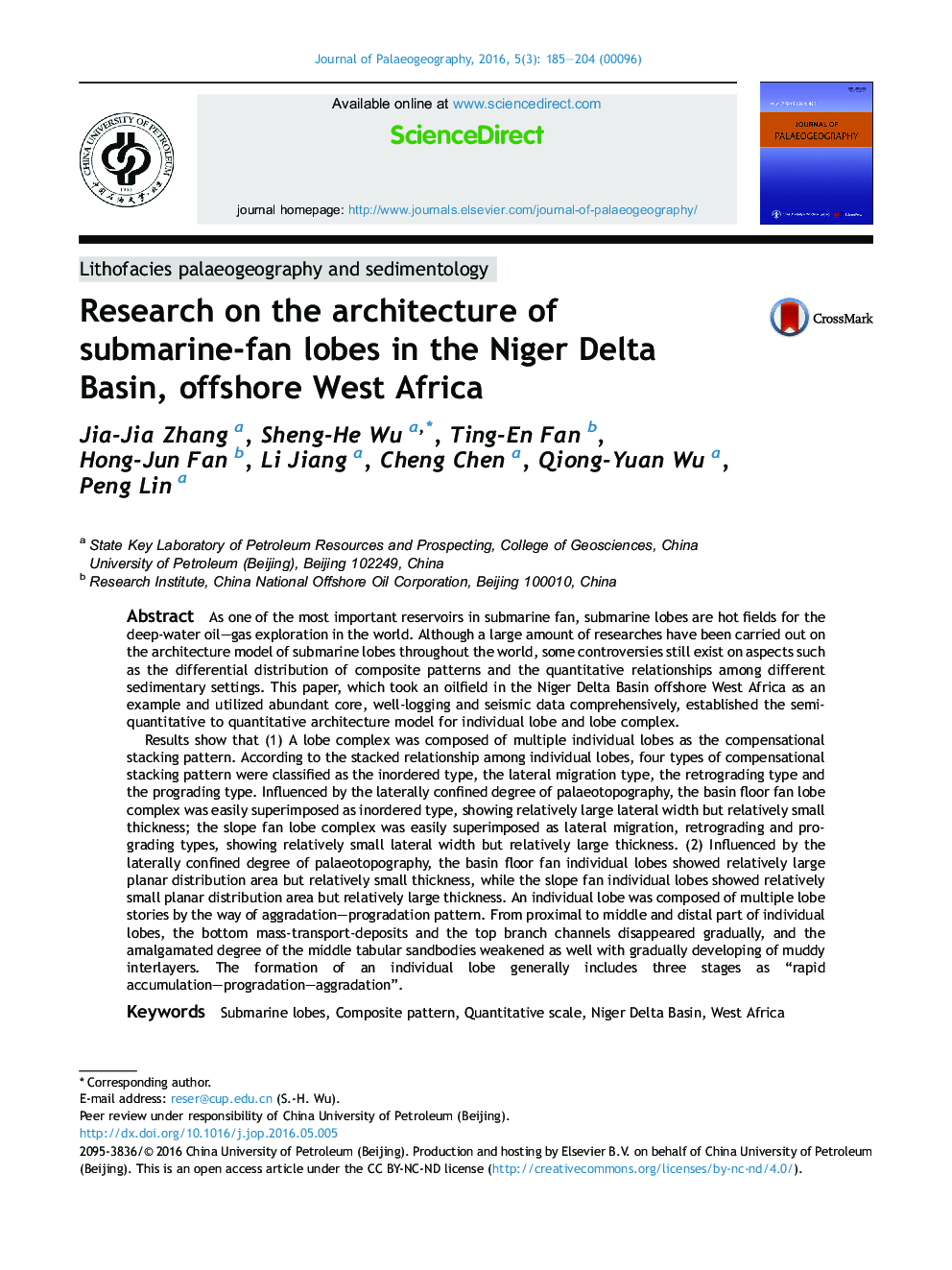| Article ID | Journal | Published Year | Pages | File Type |
|---|---|---|---|---|
| 4580936 | Journal of Palaeogeography | 2016 | 20 Pages |
As one of the most important reservoirs in submarine fan, submarine lobes are hot fields for the deep-water oil–gas exploration in the world. Although a large amount of researches have been carried out on the architecture model of submarine lobes throughout the world, some controversies still exist on aspects such as the differential distribution of composite patterns and the quantitative relationships among different sedimentary settings. This paper, which took an oilfield in the Niger Delta Basin offshore West Africa as an example and utilized abundant core, well-logging and seismic data comprehensively, established the semi-quantitative to quantitative architecture model for individual lobe and lobe complex.Results show that (1) A lobe complex was composed of multiple individual lobes as the compensational stacking pattern. According to the stacked relationship among individual lobes, four types of compensational stacking pattern were classified as the inordered type, the lateral migration type, the retrograding type and the prograding type. Influenced by the laterally confined degree of palaeotopography, the basin floor fan lobe complex was easily superimposed as inordered type, showing relatively large lateral width but relatively small thickness; the slope fan lobe complex was easily superimposed as lateral migration, retrograding and prograding types, showing relatively small lateral width but relatively large thickness. (2) Influenced by the laterally confined degree of palaeotopography, the basin floor fan individual lobes showed relatively large planar distribution area but relatively small thickness, while the slope fan individual lobes showed relatively small planar distribution area but relatively large thickness. An individual lobe was composed of multiple lobe stories by the way of aggradation–progradation pattern. From proximal to middle and distal part of individual lobes, the bottom mass-transport-deposits and the top branch channels disappeared gradually, and the amalgamated degree of the middle tabular sandbodies weakened as well with gradually developing of muddy interlayers. The formation of an individual lobe generally includes three stages as “rapid accumulation–progradation–aggradation”.
